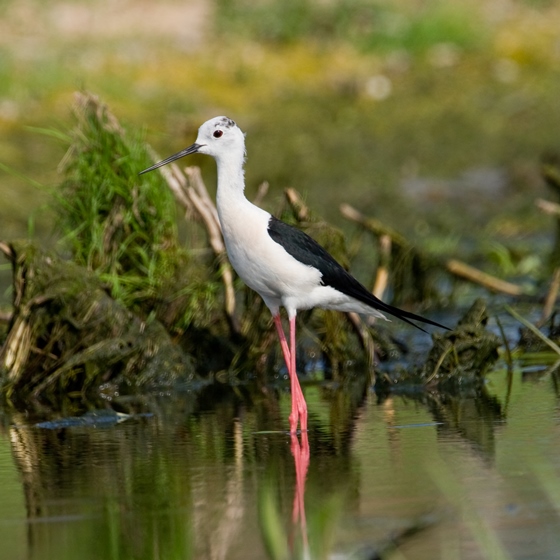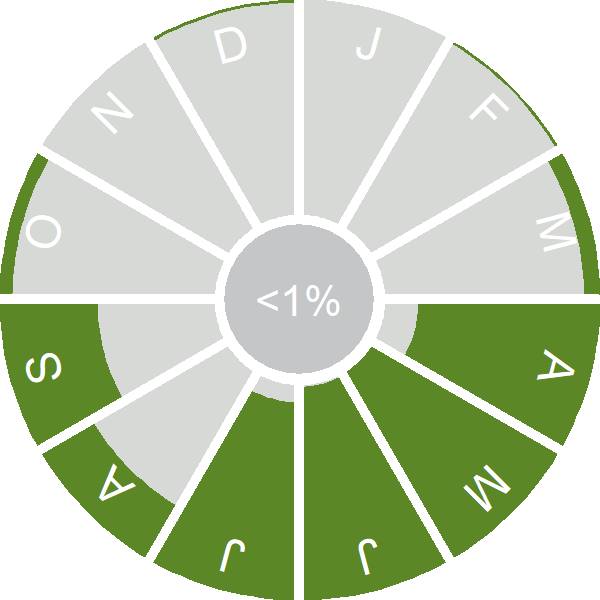Black-winged Stilt
Himantopus himantopus (Linnaeus, 1758)
IT
 BLWST
BLWST  4550
4550

Family: Charadriiformes > Recurvirostridae

This graceful long-legged wader used to be a rare passage visitor to Britain, but is now considered a colonising breeder.
With its striking black and white plumage, long bill, and red legs this species evokes the feeling of its Mediterranean home when it is found delicately wading through a lagoon, picking small insects off the water’s surface.
Breeding was first recorded in 1945 (in Nottinghamshire) but we now see a handful of breeding attempts in most years, mostly in southern England, so this species could yet become an established breeder. The reasons for this are unclear, but warming temperatures and improved water quality in our wetlands probably contribute.
Identification
Black-winged Stilt identification is usually straightforward.
SONGS AND CALLS
Listen to example recordings of the main vocalisations of Black-winged Stilt, provided by xeno-canto contributors.
Call
Develop your bird ID skills with our training courses
Our interactive online courses are a great way to develop your bird identification skills, whether you're new to the hobby or a competent birder looking to hone your abilities.
Browse training coursesStatus and Trends
Population size and trends and patterns of distribution based on BTO surveys and atlases with data collected by BTO volunteers.
CONSERVATION STATUS
This species can be found on the following statutory and conservation listings and schedules.
POPULATION CHANGE
The Black-winged Stilt first nested in the UK in 1983, and made only very occasional breeding attempts until 2014 (Ausden et al. 2016). There are encouraging recent signs that the species is in the process of colonising the UK and becoming a regular breeder,and 2019 was the sixth consecutive year that one or more breeding attempts were made (Eaton et al. 2021).
DISTRIBUTION
Most Black-winged Stilts recorded in Britain & Ireland are in spring, comprising individuals and small groups. During 2008–11 such non-breeding birds were recorded in 24 10-km squares in southern Britain and two squares in Ireland. Some records related to pairs or trios, but where these did not remain for long, or the habitat was deemed unsuitable, no breeding evidence was assigned. Many records relate to the same nomadic individuals. Prior to the 2007–11 Atlas there had been six previous breeding attempts in Britain. In 2008 a seventh attempt took place, in Cheshire, but this was ultimately unsuccessful as all three chicks disappeared before fledging.
More from the Atlas Mapstore.
SEASONALITY
Black-winged Stilts are occasional spring overshoots and some birds attempt to breed.

Movement
Information about movement and migration based on online bird portals (e.g. BirdTrack), Ringing schemes and tracking studies.
RINGING RECOVERIES
View a summary of recoveries in the Online Ringing Report.
Biology
Lifecycle and body size information about Black-winged Stilt, including statistics on nesting, eggs and lifespan based on BTO ringing and nest recording data.
PRODUCTIVITY & NESTING
Sample sizes are too small to report Productivity and Nesting statistics for this species.
BIOMETRICS
Sample sizes are too small to report Biometrics for this species.
Feather measurements and photos on featherbase 
CODES & CLASSIFICATION
Field Codes 
|
2-letter: IT | 5-letter code: BLWST | Euring: 4550 |
For information in another language (where available) click on a linked name
Research
Interpretation and scientific publications about Black-winged Stilt from BTO scientists.
CAUSES AND SOLUTIONS
Causes of change
The occurrence of more regular breeding attempts in the UK follows increases in the nearest breeding populations. Climate change may be contributing to this range expansion and drought conditions are expected to occur more frequently in south-west Europe; however, habitat availability, predation and disturbance by humans are all threats that may affect the potential colonisation of the UK by this species (Ausden et al. 2016).
Links to more information from ConservationEvidence.com
Would you like to search for another species?







Share this page